Top 25 Jazz Albums part 2
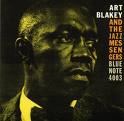
Moanin' - Art Blakey & The Jazz Messengers
Here's another gem from 1958. Art Blakey assembled an all-star group consisting of Lee Morgan, Bobby Timmons, Benny Golson (who wrote four of the six songs on the album), and Jymie Merritt. The title song, Moanin, became an instant hit with its catchy New Orleans style. Woody Shaw was asked once for his biggest influence and he quickly replied, "The solo Lee Morgan takes on Moanin."
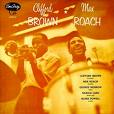
Clifford Brown and Max Roach
Clifford Brown was one of the most revered until his untimely death in 1956 at age 25. Who knows how he would have gone on to influence jazz as it developed through the '60s if he'd remained alive? His playing is so technically polished and perfected that he is constantly studied by trumpeters. This music just radiates joy with brilliant playing by the entire lineup. Many people consider Brown's solo on Joy Spring as one of the best improvisations ever recorded in jazz.

At Carnegie Hall - Thelonious Monk with John Coltrane
Luckily this recording was discovered in 2005. This is a documented concert at a pivotal point in Coltrane's career. In early 1957, Coltrane was kicked out of Miles Davis' band for drug use and partnered up with Monk for about a year. There is a fantastic album recorded live from April to July 1957 early in their partnership. This recording is from later in the year: November 28, 1957. The duo worked together quite well considering their different styles of playing. Coltrane was at his peak of complex, lightning fast lines (inspired by Monk's unique runs perhaps) while Monk remains sparse but poignant. This album can be listened to countless times and is filled with brilliance of two geniuses influencing each other.
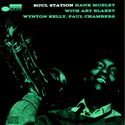
Soul Station - Hank Mobley
This is Hank Mobley's most popular album. Hank's saxophone playing is some of the most lyrical and accessible playing I've ever heard. It also helps that the supporting band consists of the most swinging players of that time: Art Blakey, Paul Chambers, and Wynton Kelly. Mobley plays melodies that sound like he's truly singing through his horn.
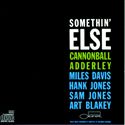
Somethin' Else - Cannonball Adderley
In 1958, this album featured a superstar lineup and brought together a few different styles of jazz. There was Miles from the school of cool, Adderley from the school of bebop, and Art Blakey from the school of hard-bop, Hank Jones from the school of swing, and finally the versatile Sam Jones on bass. Every track is outstanding as Miles takes the lead on most songs and the combination of talent makes this album truly somethin' else.
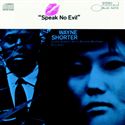
Speak No Evil - Wayne Shorter
This album is packed with some of Shorter's best-written tunes. Recorded in 1964, these songs suggest a more modern flavor than the bebop and hard bop from the decade prior. The group consists of Wayne Shorter, Freddie Hubbard, Herbie Hancock, Ron Carter, and Elvin Jones. Each song invokes a strong mood and the soloing is very interesting, easily capturing the listener's attention.
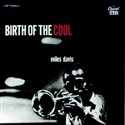
Birth of the Cool - Miles Davis
In 1949, Miles was still playing alongside Charlie Parker and Dizzy Gillespie. He was ready to break out of the current standard of bebop and explore some new musical territory. He teamed up with arranger Gil Evans and created a masterpiece that was quite different than the blazing-fast bebop of the time. The music is very lush and mellow but not lacking energy. It's the perfect backing for Miles' introspective and emotional trumpet style.
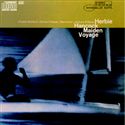
Maiden Voyage - Herbie Hancock
This is one of the great albums by Herbie Hancock. He uses the same band from Miles' second quintet but replaces Miles with Freddie Hubbard (also George Coleman is on instead of Wayne Shorter). Herbie captures the spirit of the ocean with some modern post-bop impressionistic jazz. The rhythm section of Ron Carter, Tony Williams, and Herbie are an amazing force as they meander through different textures and seem to communicate almost telepathically.

A Boy Named Charlie Brown - Vince Guaraldi Trio
Unlike many of the albums on this list, Vince Guaraldi didn't revolutionize the jazz world nor did he stand out as one of the most talented musicians of the time. However, by being the soundtrack to "Peanuts", this album introduced jazz to a whole generation of people who might not have discovered it on their own. This album has a child-like innocence to it with its simple and lyrical style. With some easily recognizable tunes like "Linus and Lucy", this album is a doorway into a wonderful nostalgic world.
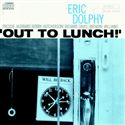
Out to Lunch - Eric Dolphy
This is Dolphy's last studio recording before his untimely death in 1964. It is a wonderful display of his unique avant-garde spirit. This album creates a mysterious soundscape with the use of the talented Bobby Hutcherson on vibes, Freddie Hubbard on trumpet, Richard Davis on bass, and Tony Williams on drums. Dolphy had an unprecedented technique and could play strange exotic melodies that had an almost eerie quality.

The Blues and The Abtract Truth - Oliver Nelson
This is a pretty serious album recorded in 1961 which goes in-depth on different forms of the blues. The first track, Stolen Moments, is a remarkable use of four horns to create an atmospheric mood with amazing solos from Freddie Hubbard, Eric Dolphy, Nelson, and Bill Evans. This album has the energy and overall quality that rivals many of the best albums in jazz but with a slightly more modern touch.
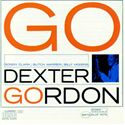
Go - Dexter Gordon
This is Dexter's finest recording which he did in 1962. He has such a smooth, full, confident sound in his playing. Overall, Dexter is pretty much the epitome of a cool jazz cat with his style, looks, and playing. It practically evokes the feeling of being in a late-night jazz club in New York in the 60's.

With Clifford Brown - Sarah Vaughan
Sarah Vaughan has an amazing voice with a comfortable three-octave range. She could scat and sing with the same harmonic sophistication as the best instrumentalists of the time. She also had an extraordinary ability to communicate lyrics effectively. This album from 1954 also features the great Clifford Brown alongside her as they play jazz standards like Embraceable You, I'll Remember April, and Lullaby of Birdland.
return to page 1 of the Top 25 Jazz Albums
or to
Jazz Albums or just return to the
home page